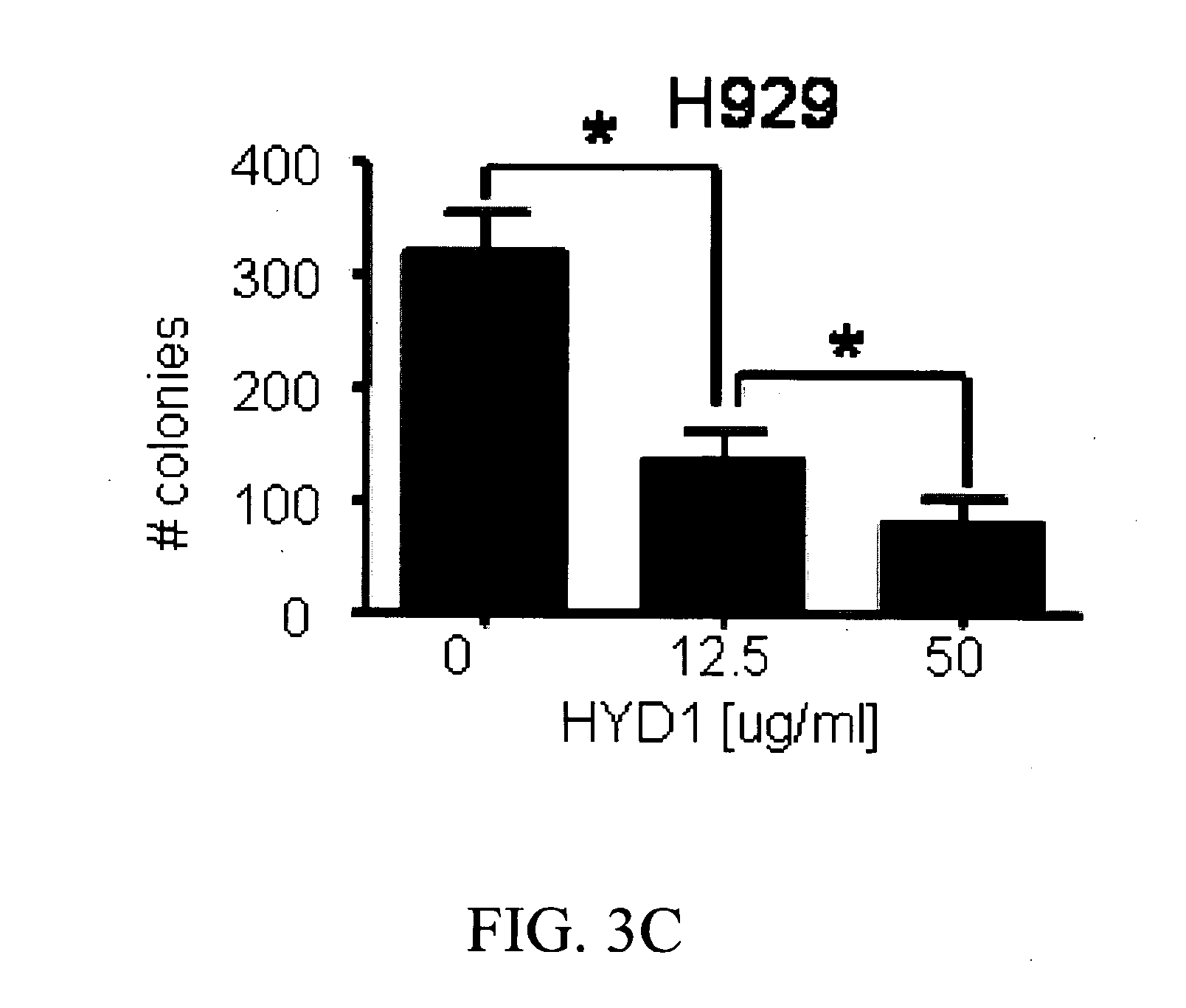Integrin interaction inhibitors for the treatment of cancer
a technology of integrin interaction and inhibitors, which is applied in the direction of peptides/protein ingredients, drug compositions, peptides, etc., can solve the problems of mm treatment challenges, drug resistance cells erupting, and recurrence of tumors, so as to facilitate the determination step
- Summary
- Abstract
- Description
- Claims
- Application Information
AI Technical Summary
Benefits of technology
Problems solved by technology
Method used
Image
Examples
example 1
Integrin interaction inhibitor Activity in Normal Hematopoietic Progenitor Cells and In Vivo Activity
[0167]A colony forming assay was used to compare integrin interaction inhibitors induced cell death in normal hematopoietic cells and MM cells. CD34+ hematopoietic progenitor cells were isolated from peripheral blood and treated for 2 hrs with integrin interaction inhibitors (12.5 and 50 μg / ml) and then plated in a methylcellulose media supplemented with growth factors supporting myeloid and erythroid colonies. Colonies were counted on day 12 post-plating. As shown in FIG. 3A, integrin interaction inhibitors did not inhibit colony formation of normal CD34+ cells. In addition, we evaluated the toxicity of integrin interaction inhibitors in normal peripheral blood mononuclear cells (PBMC). As shown in FIG. 3B, 6 hours treatment with increasing concentration of integrin interaction inhibitors did not induce cell death up to doses of 50 μg / ml in PBMC. Finally as shown in FIG. 3C, and con...
example 2
Reducing α4 Integrin Expression Confers Resistance to Integrin Interaction Inhibitor-Induced Cell Death
[0170]Currently, 11 α binding partners for β1 integrin have been identified. An integrin interaction inhibitor-resistant cell line was recently developed by chronically exposing H929 parental MM cells to increasing concentrations of integrin interaction inhibitors. The resistant phenotype correlated with reduced α4 integrin expression and ablated α4 mediated adhesion to the extracellular matrix fibronectin and VCAM1 (data not shown). The cell line was initially tested to determine whether α4 expression is required for integrin interaction inhibitor-mediated cell death. As shown in FIGS. 3A-3B, reducing α4 levels in H929 cells using shRNA partially blocked integrin interaction inhibitor-induced cell death. The fact that reducing α4 levels did not abrogate integrin interaction inhibitor-induced cell death suggests that additional αXβ1 heterodimers may also contribute to cell death.
example 3
Peptide Design
[0171]Using combinatorial peptide libraries and a functional binding assay, several peptides have been identified that inhibited α2β1 and α6β1 integrin mediated adhesion of prostate cancer cells to fibronectin, laminin and collagen IV.1 They identified an all D-amino acid containing peptide referred as HYD1 (KIKMVISWKG) that blocks binding of epithelial prostate carcinoma cells to extracellular matrix components.2,3 Hazlehurst and co-workers have truncated the N- and C-termini and alanine scan studies identified MVISW as the likely core region of linear D-HYD1 required for biological activity. Using this information and the finding that Val for Ile replacement gave a more active D-HYD1 analog, we had developed a cyclized version of D-HYD1 that was designed to display the core sequence (MVVSW) in the recognition strand and (KLKLK) as the non-recognition strand. The pentapeptide (KLKLK) was selected as the non-recognition strand to improve the solubility. N- to C-terminu...
PUM
| Property | Measurement | Unit |
|---|---|---|
| pH | aaaaa | aaaaa |
| thickness | aaaaa | aaaaa |
| path length | aaaaa | aaaaa |
Abstract
Description
Claims
Application Information
 Login to View More
Login to View More - R&D
- Intellectual Property
- Life Sciences
- Materials
- Tech Scout
- Unparalleled Data Quality
- Higher Quality Content
- 60% Fewer Hallucinations
Browse by: Latest US Patents, China's latest patents, Technical Efficacy Thesaurus, Application Domain, Technology Topic, Popular Technical Reports.
© 2025 PatSnap. All rights reserved.Legal|Privacy policy|Modern Slavery Act Transparency Statement|Sitemap|About US| Contact US: help@patsnap.com



